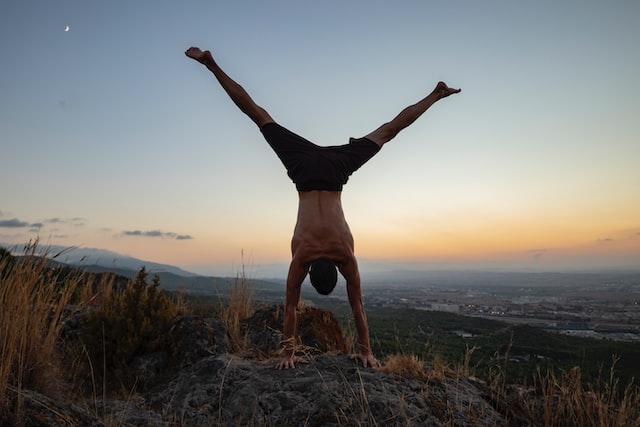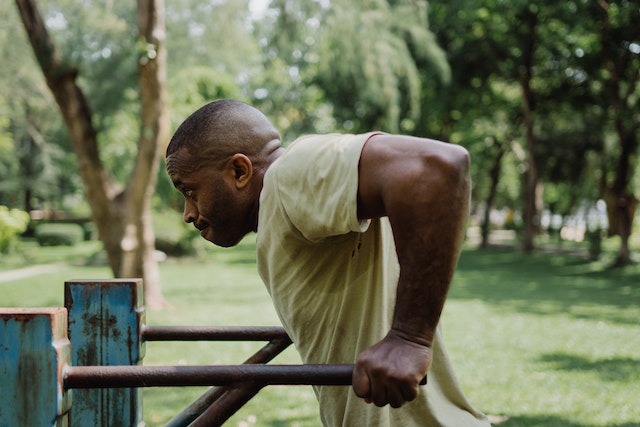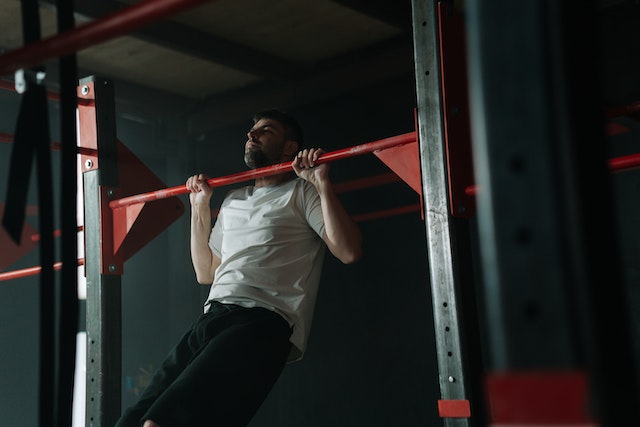Have you ever wanted to master the art of doing a handstand without relying on a wall for support? Maybe you’ve tried practicing against a wall but feel like you’re not making any progress, or perhaps you’re simply looking for a new challenge to take your calisthenics skills to the next level. Learning to do a freestanding handstand is an impressive feat that not only looks impressive but also strengthens your upper body, improves your balance, and boosts your confidence.
In this article, we’ll guide you through the steps and exercises needed to achieve a handstand without a wall, with a touch of humor and a friendly tone. From warming up properly to mastering balance, building strength, and troubleshooting common mistakes, we’ll cover all the essential elements you need to know to achieve your goal. So let’s get started on this exciting and rewarding journey!
Importance of warm-ups
Before attempting any physical activity, it’s essential to warm up properly to prevent injury and ensure that your body is ready for the challenge. Handstands are no exception – failing to warm up adequately can increase the risk of wrist and shoulder injuries.
Some great warm-up exercises to prepare your body for a handstand include wrist stretches and shoulder mobility drills. Start with gentle wrist rotations, then move on to more intense wrist stretches, such as placing your palms on the ground with fingers facing toward you and leaning forward to stretch your wrists.
For shoulder mobility, try some shoulder circles and arm swings, forward and backward. You can also practice shoulder extensions, which involves standing with your back against a wall, then extending your arms overhead as far as you can without letting your back arch off the wall.
Remember, warming up is not only about stretching and mobility – it’s also about raising your heart rate and getting your blood flowing. You can add in some light cardio exercises, such as jumping jacks or jogging in place, to increase your heart rate and prepare your body for the challenge ahead.
Taking the time to warm up before attempting a handstand will not only reduce the risk of injury but also help you perform at your best. So, take a few minutes to prepare your body, and you’ll be ready to tackle the next step: finding your balance.
Finding your balance
Before attempting a handstand, it’s crucial to have good balance. In a handstand, you’ll be balancing your entire body weight on your hands, which requires excellent control and stability. Improving your balance will not only help you achieve a handstand but also prevent injuries.
Two great exercises to improve your balance and prepare you for the handstand are the tripod pose and the crow pose.
The tripod pose is a great starting point for finding your balance. Begin by placing your hands on the ground, shoulder-width apart, and bringing your head down to the floor. Lift one leg at a time, bringing your knees onto your elbows, then gradually extend your legs until your body is in a vertical position.
The crow pose is another useful exercise to help you develop your balance. Start by squatting down, placing your palms on the floor with your fingers facing forward. Then, bring your knees to the back of your upper arms, lift your feet off the ground, and balance your body weight on your hands.
Remember, finding your balance is not about strength alone – it’s also about body awareness and control. Pay attention to your breathing and engage your core muscles to maintain stability. By practicing these exercises regularly, you’ll gradually develop the control and confidence needed to move on to the next step: progressions towards a freestanding handstand.
So, take your time and enjoy the process of finding your balance. With consistent practice, you’ll be one step closer to achieving a perfect handstand.
Progressions towards a freestanding handstand
Now that you’ve warmed up and found your balance, it’s time to move on to the exciting part: progressions towards a freestanding handstand. Starting from the wall-assisted handstand, these exercises will help you build the strength, control, and confidence needed to achieve a handstand without the wall.
Step-by-step progressions
- Wall-assisted handstand: Begin by practicing your handstand against a wall, with your hands placed shoulder-width apart and your feet resting against the wall. Focus on keeping your body straight and engaging your core muscles.
- Wall-facing handstand: Next, try facing the wall and walking your feet up the wall until your body is in a vertical position. This exercise will help you develop the strength needed to hold your body weight in a handstand.
- Stomach-to-wall handstand: Once you’re comfortable with the wall-facing handstand, try bringing your stomach to the wall and holding the position for a few seconds. This exercise will help you get used to the feeling of being in a handstand without relying on the wall for support.
- Freestanding handstand: Finally, when you feel ready, attempt a freestanding handstand. Begin with a small hop and focus on maintaining your balance for a few seconds.
Exercises to strengthen your core and improve body awareness
- Hollow body hold: This exercise involves lying on your back and lifting your arms and legs off the ground, creating a “hollow” shape with your body. Hold the position for as long as you can, focusing on engaging your core muscles.
- Dolphin pose: This yoga pose is excellent for strengthening your shoulders and improving body awareness. Begin on your hands and knees, then lift your hips into the air and straighten your legs, forming an inverted “V” shape.
Remember, progressing towards a freestanding handstand takes time and patience. Don’t rush the process and make sure to practice consistently. With time and effort, you’ll be able to achieve this impressive feat and take your calisthenics skills to the next level.
Troubleshooting common mistakes
As with any new skill, it’s common to make mistakes when attempting a handstand. Here are some tips on how to correct common mistakes and improve your form and technique.
- Arching your back: One of the most common mistakes people make when attempting a handstand is arching their back. This can put unnecessary strain on your lower back and make it harder to balance. To correct this, focus on keeping your body straight and engaging your core muscles. Imagine someone pulling your feet towards the ceiling and keeping your hips in line with your shoulders.
- Overcompensating with your arms: Another common mistake is overcompensating with your arms, causing your shoulders to shrug and your elbows to hyperextend. This can put a lot of pressure on your joints and make it harder to hold the handstand. To fix this, focus on pushing through your shoulders and engaging your core muscles. Your arms should be straight but relaxed, with your fingers spread wide to increase stability.
- Gradual improvement: It’s essential to remember that achieving a freestanding handstand takes time and consistent practice. It’s important to listen to your body and gradually improve your form and technique. Start with shorter holds and gradually increase your time in the handstand as you improve. Use a spotter if necessary and don’t be afraid to take breaks if you feel tired or overwhelmed.
- Practice, practice, practice: The most important thing you can do to improve your handstand is to practice regularly. Incorporate handstand progressions and core strengthening exercises into your workout routine and dedicate time each day to practicing your handstand. With time and patience, you’ll be able to achieve a perfect handstand and amaze your friends with your calisthenics skills.
Remember, the handstand is a challenging but rewarding exercise that requires both physical and mental strength. By focusing on your form, gradually improving your technique, and practicing regularly, you’ll be able to achieve a perfect handstand without relying on the wall for support.
Tips to stay safe and prevent injuries
As with any physical activity, safety should be your top priority when attempting a handstand without a wall. Here are some important safety considerations to keep in mind and tips for preventing injuries:
- Know your limits: It’s essential to listen to your body and know your limits. If you feel tired or in pain, take a break and rest. Pushing yourself too hard can lead to injury and set back your progress. Gradually build up your strength and endurance over time and don’t try to attempt a handstand beyond your current ability.
- Use proper form: Using proper form is essential for preventing injuries when attempting a handstand. This means keeping your body straight, engaging your core muscles, and using your shoulders for stability. Make sure your wrists are strong enough to support your body weight and avoid hyperextending your elbows.
- Avoid overexertion: Overexertion is a common cause of injury when attempting a handstand. To prevent this, start with shorter holds and gradually increase your time in the handstand as you improve. Take breaks if you feel tired or overwhelmed and don’t push yourself too hard too quickly.
- Use spotters: When attempting a handstand without a wall, it’s a good idea to have a spotter to assist you if necessary. This can be a friend or a personal trainer who can help you find your balance and prevent falls. Make sure your spotter is experienced and knows how to assist you safely.
- Stretch and warm up: Proper stretching and warm-up exercises are essential for preventing injuries when attempting a handstand. Make sure to stretch your wrists, shoulders, and core muscles before attempting a handstand. Warm-up exercises such as wrist stretches and shoulder mobility drills can help prepare your body for the physical demands of a handstand.
By keeping these safety considerations in mind and using proper form and technique, you can prevent injuries and stay safe when attempting a handstand without a wall. Remember, progress takes time and dedication, so take it slow and focus on improving your form and technique before attempting more advanced moves. With consistent practice and a safety-first mindset, you’ll be able to achieve your handstand goals while keeping your body safe and healthy.
Final thoughts
In conclusion, doing a handstand without a wall can seem like a daunting task, but with the right mindset, proper technique, and consistent practice, it is achievable. By following the warm-up exercises, finding your balance, progressing through the different stages of the handstand, troubleshooting common mistakes, and staying safe, you can gradually work your way towards a freestanding handstand. Remember to be patient, listen to your body, and celebrate your progress along the way.
In addition to the physical benefits, doing a handstand can also provide mental and emotional benefits, such as building confidence, improving focus, and reducing stress. So, not only will you be improving your physical strength and balance, but you’ll also be strengthening your mind and spirit.
We hope that this guide has given you the information and inspiration you need to start your journey towards a handstand without a wall. As with any physical activity, it’s important to consult a physician before beginning, especially if you have any pre-existing conditions. So, grab a friend, find a safe and open space, and start practicing!






